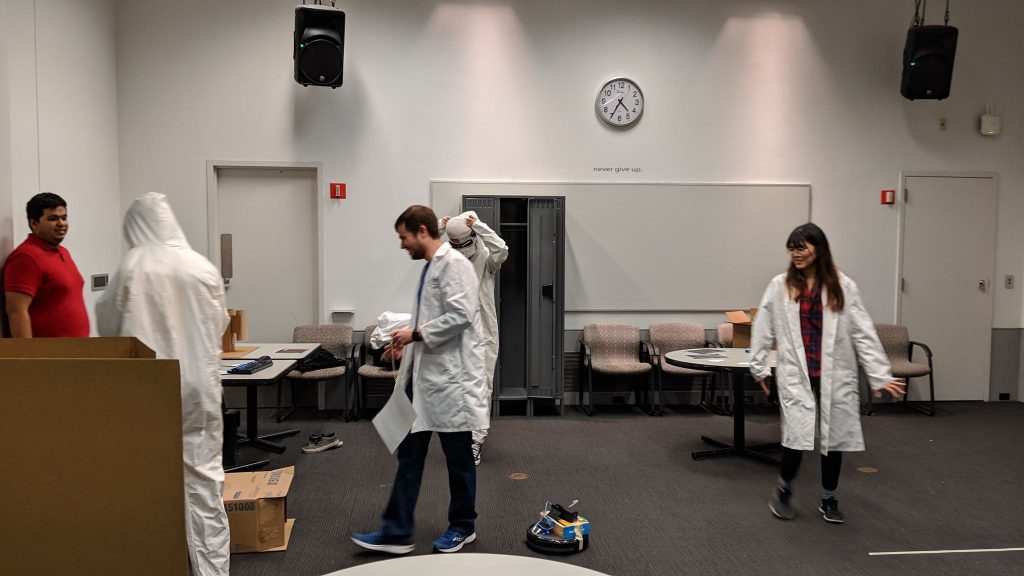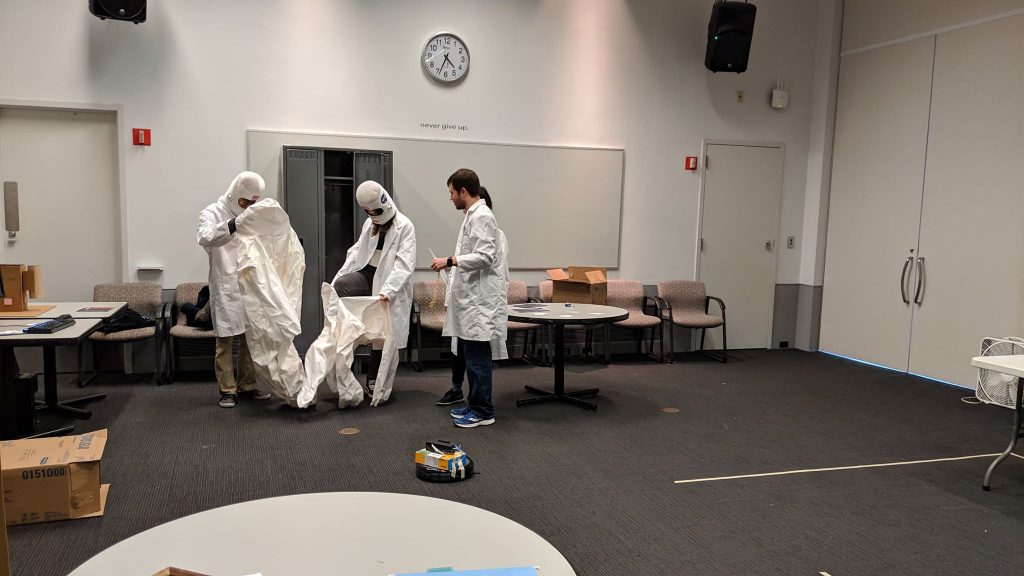
This week was all about getting to the point where we could conduct a playtest of our experience with real people who were not ourselves. Given that we are still trying to determine what the most fun and engaging puzzle systems are and trying to craft a compelling story around them—and consequently haven’t ordered any actual construction materials yet—this meant making a lot of things out of cardboard, finding random stand-in props around the building (we happen to have a lot of those), and informing our playtesters that they would have to use their imaginations for quite a bit of it.
Yes, it’s probably not the most satisfactory experience for the players, but it’s incredibly useful information for us as we can see (even at this rough level of completion) what’s engaging, what’s frustrating, what’s sailing over their heads, etc.
Plus, I got to be in another room and talk to players as that robot you see in the picture above, so all in all, it was a pretty cool day.

With a script (and premise) that was hot off the presses, Alan (in character) introduced our testers to the story and situation they were about to encounter. After the players were appropriately briefed, they were led into the actual experience room, where Alan took on the role of gamemaster (which only exists for the purposes of these early tests) where he can explain how the non-functional puzzle elements would work were they actually built out.
Rajat operated the DOS-style computer we had which was involved in several puzzles, Tara controlled the robot’s movements, and Raisa was keeping time and taking notes, as well as communicating with me outside the room. It was all hands on deck, and a crazy, nerve-racking, but ultimately fun time.
We actually conducted two playtests with two separate groups, who each filled out post-experience surveys that will allow us to improve on the experience in subsequent iterations. Anecdotally, our first group approximated what we’d imagined as an ideal playthrough, in terms of the fun they were having, interactions with the robot character, and the time they took to complete the puzzles. The second group barely finished the first puzzle. These disparate experiences were not necessarily surprising, but confirmed that we have a long way to go until this thing is even close to being ready.
We’re all looking forward to dissecting what went right and what went wrong next week and making things better for our next test. Progress!